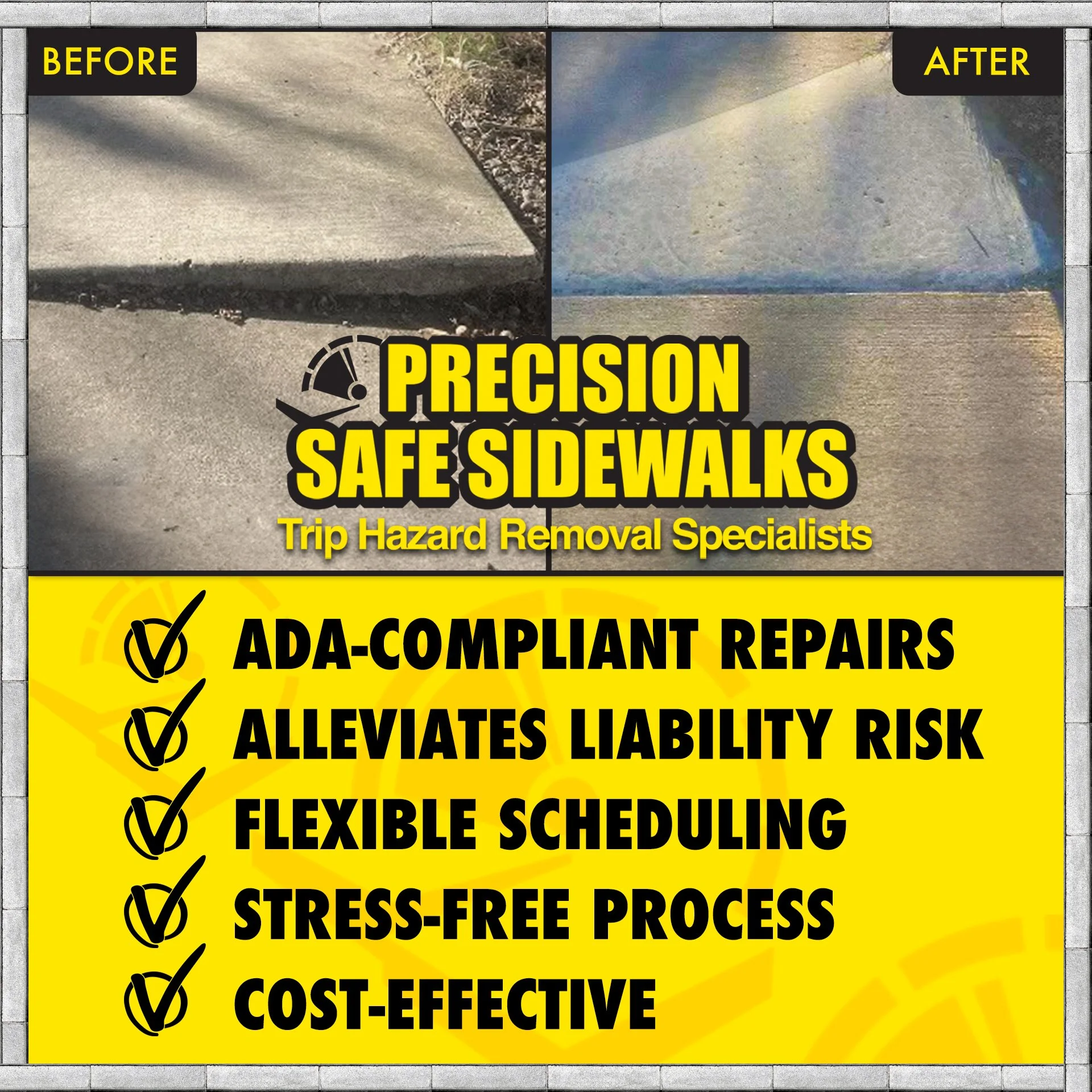Sidewalks are more than just paths—they’re vital components of a community’s infrastructure, ensuring accessibility, safety, and connectivity for residents and visitors alike. For municipalities, managing sidewalk maintenance effectively can be a challenge, especially when faced with budget constraints and extensive networks. Prioritizing repairs is crucial to ensure resources are allocated wisely and safety standards are upheld. Here’s a guide to help cities and towns determine how to prioritize sidewalk repairs:
1. Assess High-Traffic Areas
Focus first on sidewalks in areas with heavy foot traffic, such as downtown districts, schools, and public transportation hubs. These areas are used by a large number of pedestrians daily, and trip hazards can cause significant disruptions. Repairing these critical zones not only enhances public safety but also improves the overall functionality of the community.
2. Identify ADA Non-Compliant Locations
The Americans with Disabilities Act (ADA) requires sidewalks to be accessible to individuals with disabilities. Conduct an assessment to pinpoint sidewalks that are out of compliance—such as those with excessive slopes, uneven surfaces, or insufficient width. Addressing these issues not only prevents potential legal liabilities but also ensures that public spaces are inclusive for everyone.
3. Evaluate Safety Risks
Sidewalks with significant safety hazards, such as deep cracks, and trip hazards, should take precedence. Prioritize repairs in locations where these issues could lead to injuries, especially near playgrounds, senior living facilities, and healthcare centers.
4. Focus on Critical Connections
Ensure that sidewalks serving as critical connectors—linking neighborhoods to essential services like grocery stores, libraries, and parks—are well-maintained. When these pathways are neglected, they hinder accessibility and mobility, particularly for individuals using wheelchairs, strollers, or bicycles.
5. Consider Community Feedback
Engage with residents to understand their experiences and concerns regarding sidewalk conditions. Public input can provide valuable insight into which areas require immediate attention, building trust and transparency between municipal leadership and the community.
6. Leverage Cost-Effective Solutions
Use innovative repair techniques, such as those provided by Precision Safe Sidewalks, to address trip hazards and uneven concrete more efficiently. Unlike traditional methods like concrete grinding, our solutions are faster, less disruptive, and cost-effective, allowing municipalities to stretch their budgets while achieving better results.
7. Plan for Future Repairs
Develop a proactive maintenance schedule that ensures all sidewalks are regularly inspected and repaired as needed. This prevents minor issues from becoming major hazards, ultimately reducing long-term repair costs and improving overall infrastructure quality.
By using a systematic approach to prioritize sidewalk repairs, municipalities can improve public safety, and foster a more connected and accessible community. Investing in efficient, cost-effective repair methods helps ensure that cities and towns remain walkable and welcoming for all.



